Swan Upping: Queen Elizabeth's Beloved 800-Year-Old Royal Tradition Returns to the River Thames
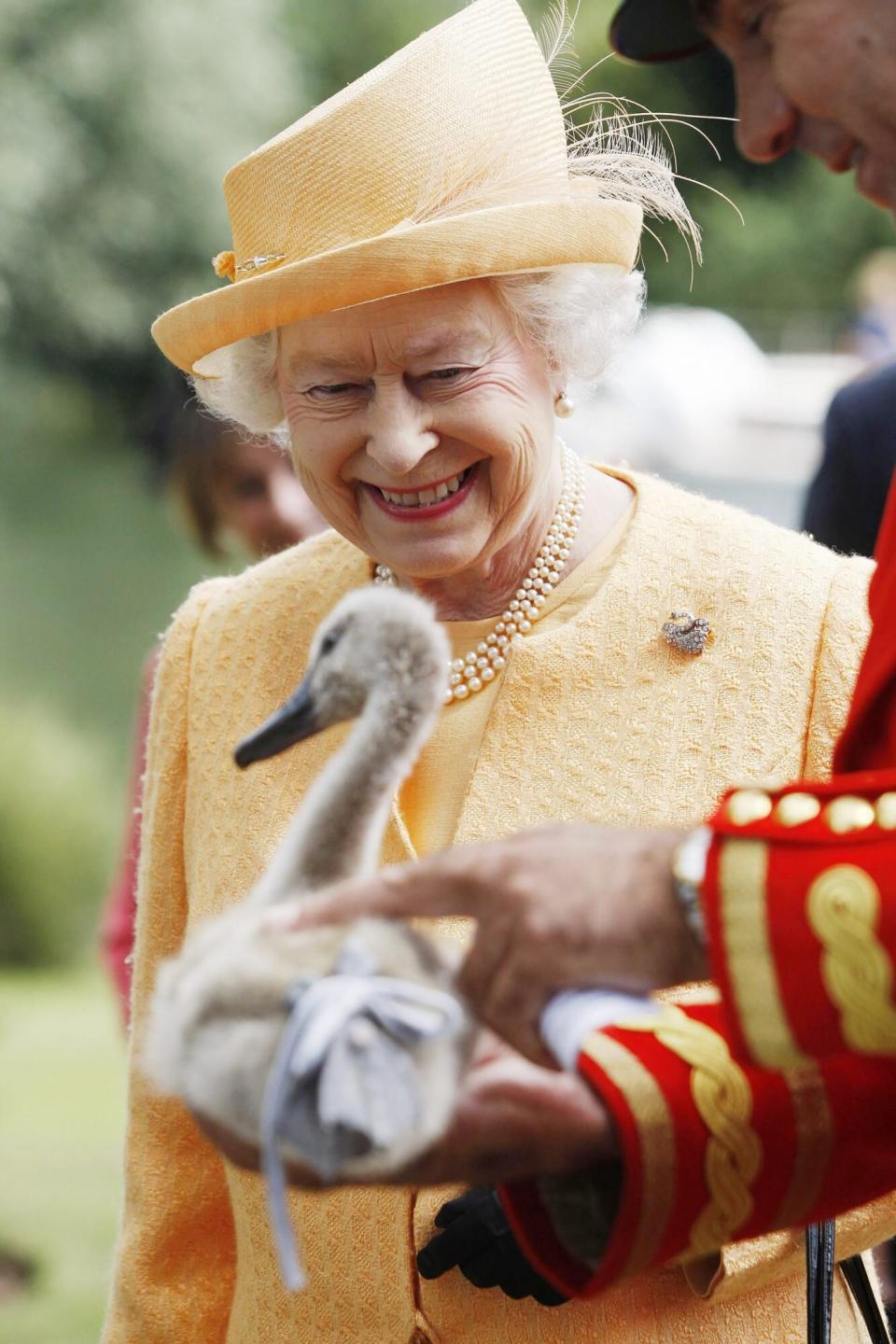
Sang Tan/PA Images/Getty Queen attends annual Swan Upping in 2009
Queen Elizabeth enjoys all manner of historic perks thanks to her position as monarch, but one of the most unusual is that she has the right to own any swan swimming in open waters throughout the United Kingdom.
"I could go to Wales or any part of England or Scotland and say, 'that swan belongs to Her Majesty' and just take it. That would be it," says David Barber, who holds the ancient title of Royal Swan Marker.
Thankfully, while British monarchs have "owned" the U.K.'s swan population since the year 966 AD and the reign of King Edgar "The Peaceful," these days the Queen only exercises her right on a 79-mile section of the River Thames stretching from Sunbury-on-Thames (around 15 miles southwest of central London) to the historic market town of Abingdon in Oxfordshire.
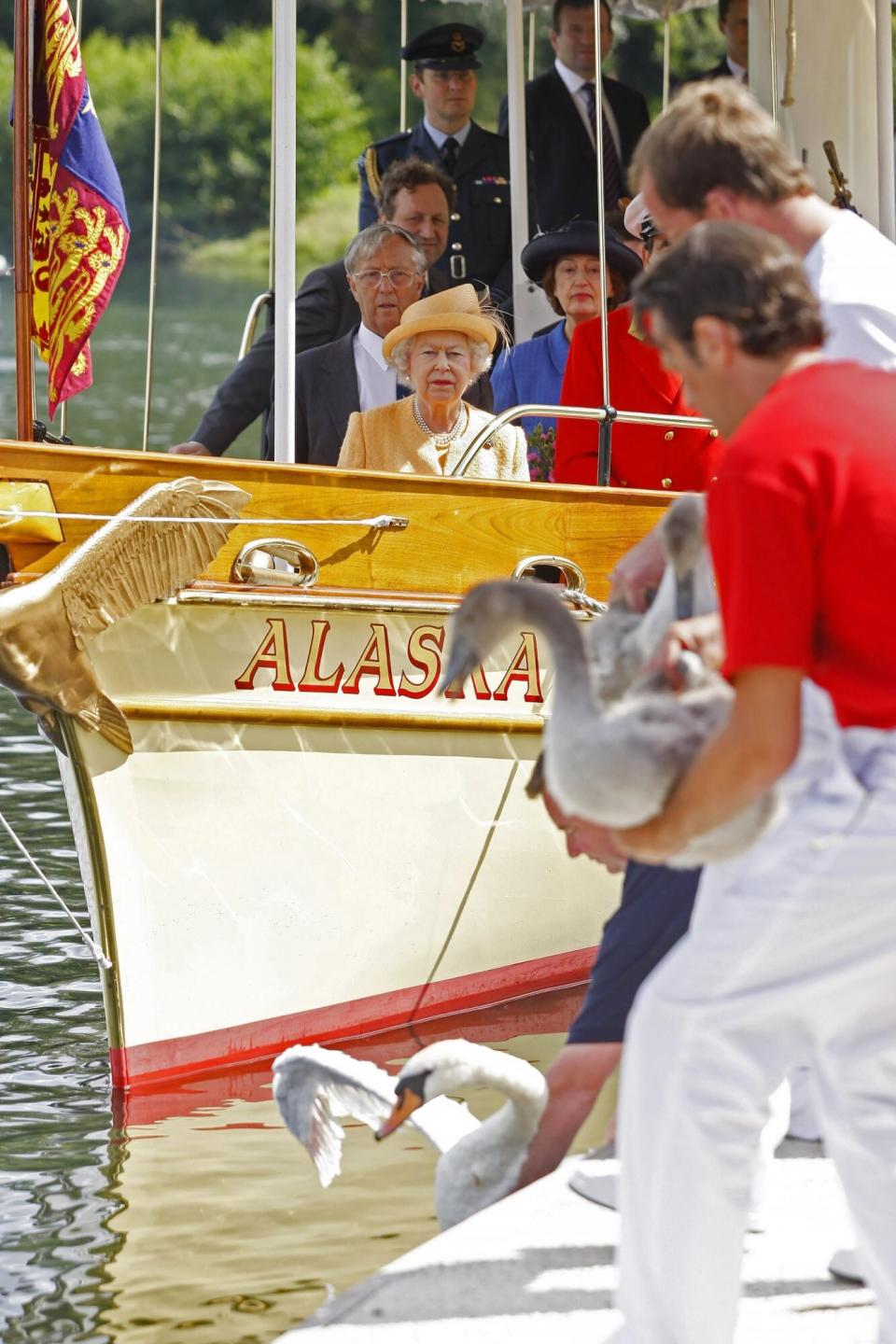
Sang Tan/PA Images/Getty Queen attends annual Swan Upping in 2009
While Edgar and many subsequent British monarchs used their right to cook and eat the birds at extravagant royal feasts, the Queen also now only flexes it to perform an annual census of the swan population on the River Thames through an ancient process called Swan Upping that dates back to the 12th century.
"Swan Upping is all about conservation," adds Barber, who completed a COVID-restricted three-day bird count on Thursday. Sadly, the 2020 count had to be postponed because of the pandemic.
"A few years ago — in the 1980s — we had a lot of problems with lead poisoning, and the population on the River Thames and everywhere else in the U.K. went down drastically," he continues.

Steve Parsons/PA Images via Getty The Queen's Swan Marker David Barber
"It was all through split lead shot being used in fishing tackle, but we got that banned and they now use a different type. The population has gradually returned, but the purpose of Swan Upping is that it gives you an indication of how the swan population is faring throughout the other parts of the country as well."
It's not for the faint-hearted. Barber's 19-strong team of Swan Uppers take to the river at 8:30 a.m. in a team of six traditional rowing skiffs — some more than 100 years old — decked out in flags, pennants, swan hooks, boat hooks and oars carrying the Queen's ERII insignia to designate that they're working on behalf of Her Majesty.
Once they come across a family of swans with signets, the crew of the lead boat shouts, "All up," and the fleet of small boats gently corrals the birds into a position where they can be delicately lifted out of the water.
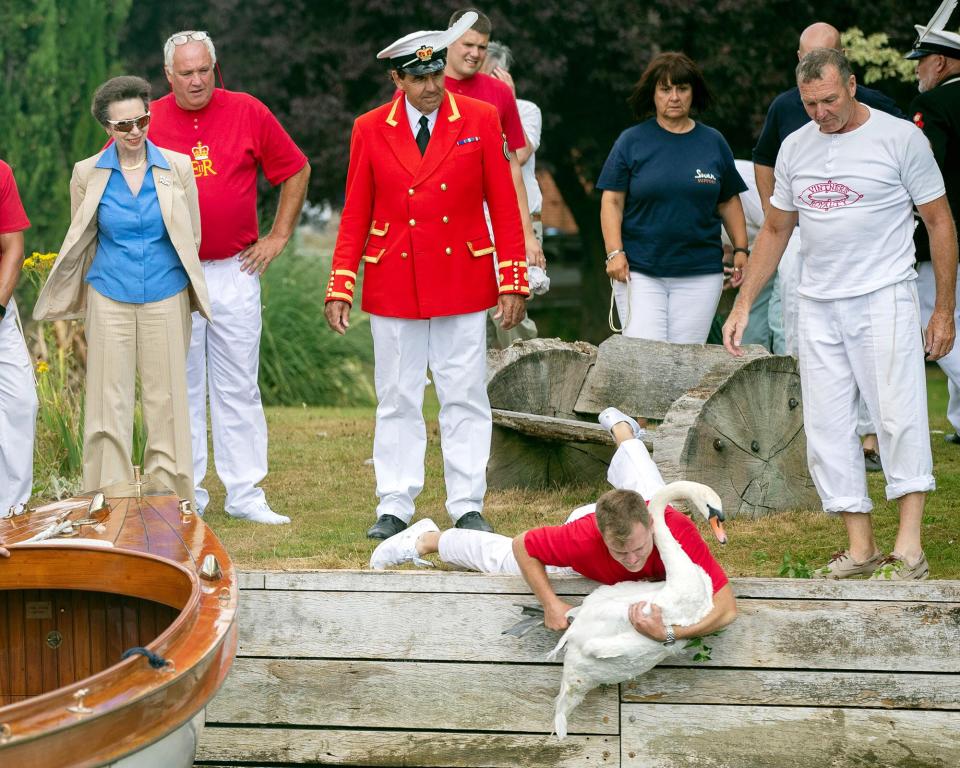
PA Images/Alamy
The swans and signets then have their feet or wings tied before they are moved onto the riverbank to be weighed, measured and inspected for signs of injury or illness.
"The whole process, as long as there's no serious injury on the swans, takes about 20 minutes," says Barber. "All the young signets and adult birds have to be released together as the signets will get lost otherwise. So you have to be very, very careful. You face the signet to the parent bird and then they will go off in the water together.
"Swans are large birds that weight up to 15 kilograms [33 pounds]," he adds. "They have a wingspan of approximately 2.5 meters [8.2 feet], so they are a very large bird to deal with. They are heavy to get out of the water and, of course, they flap around quite a bit too."
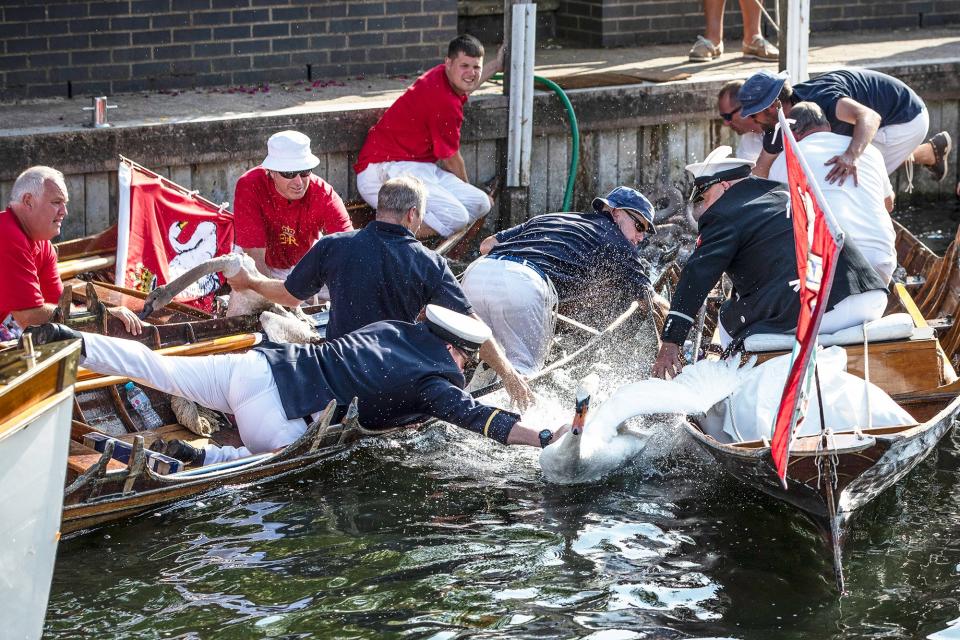
Dan Kitwood/Getty
But Barber notes, "It's worth doing because if we didn't, the population of swans would just gradually disappear."
Can't get enough of PEOPLE's Royals coverage? Sign up for our free Royals newsletter to get the latest updates on Kate Middleton, Meghan Markle and more!
It's also educational. The Swan Uppers always make sure to involve as many local school children as possible in the weighing and measuring so they can learn about conservation, the makeup of the River Thames, and the lifecycle of the swans themselves. And the Uppers have passed on their knowledge to the royal family too.
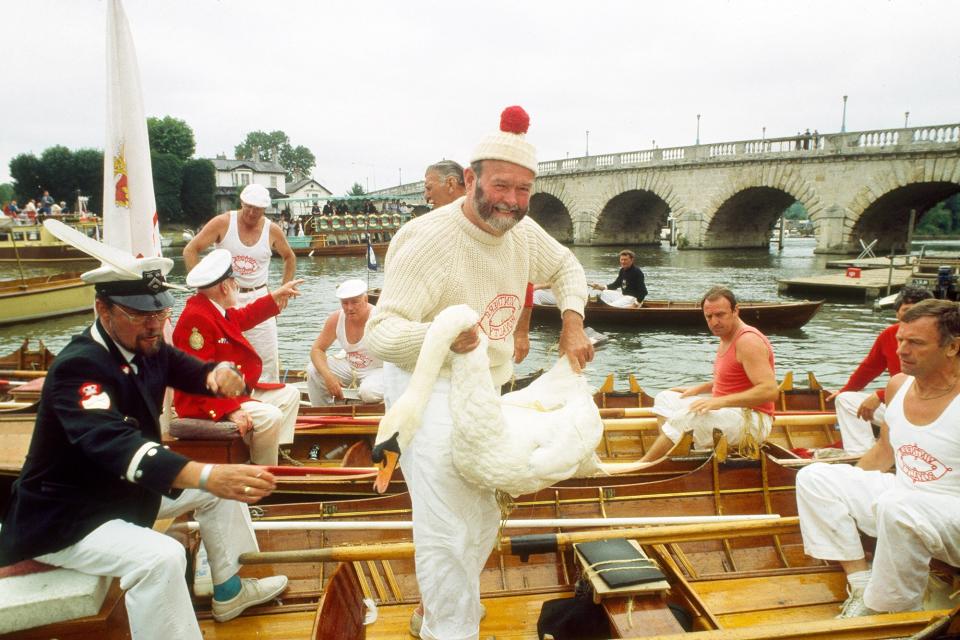
Tom Stoddart/Getty
"The Queen visited swan upping in 2009," says Barber. "She came along and was very interested in all the processes that we were doing. Asked lots of questions. Met lots of children.
He continues, "Three years ago, the Princess Royal (Princess Anne) came along too. She actually went in my rowing skiff and sat next to me as we rowed up the river. She took a lot of interest in it all."

 Yahoo Finance
Yahoo Finance 